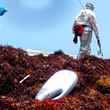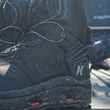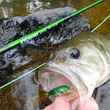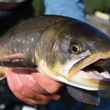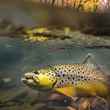When I was a kid, our car and mobile home smelled like Winston cigarette smoke, and—by osmosis—so did I. My mom loved to smoke, and most of her friends shared her passion for the game, especially Uncle Smokey. Uncle Smokey wasn’t my uncle by blood or marriage, just a close family friend who wore a black captain’s hat, drove a Harley-Davidson cruiser, and called me Timothy J. as though I had one of those southern double names. For my mom, Uncle Smokey, and their friends, cigarettes were the smartphones of the day. Everyone had to have one, whether it was good for them or not. So I lived my childhood in a cloud of smoke, and much like a fish doesn’t know it’s wet until it’s not, I didn’t know I stank until I didn’t.
Here in Montana, the Big Sky sun has broiled my body’s veneer of sunscreen, sweat, river water, and mud into a funk that could run a pig off a manure wagon. Even Mom and Uncle Smokey would raise a brow at this achievement. But no one in the fly shop complains. They, too, are fly anglers, and like me, they just want to hang out with like-minded people and buy some things they may or may not need. I settle on a half-dozen flies and a retractor gadget to keep my other gadgets and gizmos from getting away. When I pay the kid behind the counter, I submit to the stench and ask for directions to the nearest truck stop with a shower.
The kid’s answer is Montana’s version of New England’s “You can’t get there from here.” So I drive south to Helena and then west toward Missoula. At a travel plaza a few miles before Missoula, I give ten dollars to a lady with tangerine hair, a missing tooth, and a distinctive scar under her left eye. In return, she hands me two avocado-colored towels, a matching washcloth, and a key to room number two. It’s a practical room with a sink, a toilet, and a shower, all clean enough to ease my worries about not wearing the cheap flip-flops Roxanne said would keep my feet from becoming athletic. Fifteen minutes later, I’m back at the truck, and—like the label on the body-wash bottle promised—I smell like a Caribbean island vacation. But the inside of the Suburban does not. The once-sweet smell of adhesive, fabric, and plastic that saturated the cab when I first drove off the Chevrolet lot is gone. In its place is a remnant of the crud I just scrubbed from my body, plus something I might blame on my dog if he were here. But despite all that, I smell the books.















